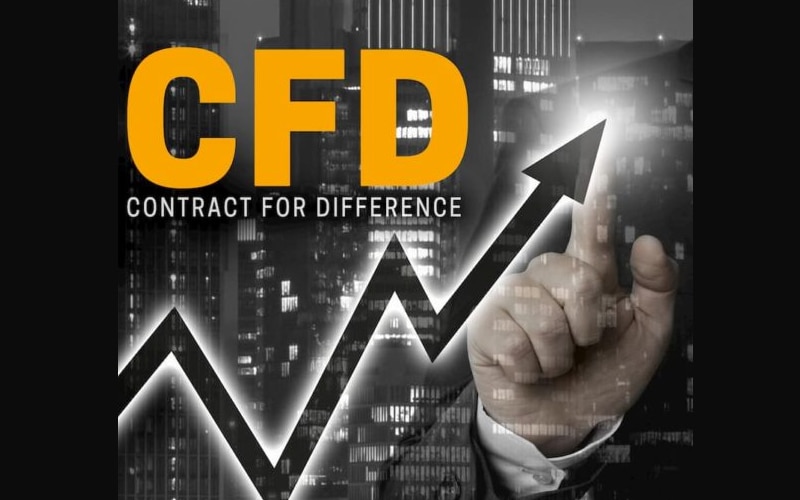CFDs Explained
A CFD stands for Contract for Difference. It’s a derivative product involving a contract between a CFD provider and an investor. It consists of an underlying security, which might be a stock on an overseas or local share market, a currency, debt security, a commodity, or an overseas or local stock index. Through CFDs, the investor is buying and selling the price movement of the security, rather than directly owning the shares or securities. The CFD contract is a representation of a theoretical buy or sell order. The profit and loss are calculated by the difference between the opening and closing price, just when the position is closed.
Individuals opening a CFD position must put down a deposit on the value of shares. This can be as little as 5%. The CFD contract mimics the performance of the shares. CFD providers thus allow their clients to enter a short position at the same expense of entering a long one. Trading CFDs give traders the opportunity to trade long or short. For instance, an investor can sell a stock or short it using a CFD contract if he/she thinks that the stock is going to fall.
Costs Involved in Using CFDs
CFDs are usually provided by CFD providers. They tend to charge traders a premium for using CFDs. This can come in many forms described below.
Financing costs
Investors can trade securities by investing as little as 3% in some cases of the underlying asset’s value. The CFD provider offers exposure to the balance while the investor gains exposure to the whole amount of the transaction. Financing costs are charged on the portfolio’s balance in addition to the initial deposit. The CFD provider takes out a hedge to protect its own exposure to the underlying asset. It then passes on the cost of that hedge on to the investor in the form of a financing charge. Financing costs are usually calculated as a margin which can vary from 1.25 to 2% in some cases.
Commission
CFD providers charge a commission on a user’s initial deposit. In some cases, they offer flat commission rates regardless of the transaction size. Many brokers commonly offer a flat commission of 0.10 or 0.20 percent. Others charge commissions on a sliding scale ranging from 0.05% to 0.2%.
Minimum Opening Balance
The requirements for minimum opening balance can range from zero to as high as $5000 or $10000 in the case of some brokers and providers.
Monthly fees
Monthly fees depend mostly on the provider or broker chosen. Some have no monthly fee and do not charge for live market feeds. Others charge a monthly account fee but have packages for frequent traders that waive them off.
Advantages and Features of CFDs
Short-term Trading
Traders who want a cost-effective, leveraged way to access different markets should use CFDs. They can take advantage of the market volatility by implementing various short-term techniques. However, they are not suited for individuals who are searching for wealth accumulation through private portfolios, or for retirees who are looking for efficient risk management.
No Expiry Date
One of the major advantages that CFDs have over other derivative trading instruments is that they do not have an expiry date, unlike warrants or options. This allows investors to keep their CFDs open for as long as they prefer. This gives CFDs a high degree of flexibility.
In recent years CFD providers have been modifying their products to appeal to traders and investors who prefer long-term strategies. Thus, these traders can use CFDs in the following ways:
Trading with leverage
Traders can use CFDs as a margin loan to get access to greater market exposure. They can control losses by placing stop losses in the correct positions. A stop loss can be likened to an insurance premium, providing an additional layer of protection. Traders should always realize that the losses they encounter while trading CFDs are not limited to the deposit paid. If the market moves against the CFD holder, he/she may be called upon to pay additional funds. To avoid such scenarios, the use of a normal as well as a guaranteed stop loss is recommended.
Deferring Capital Gains
It may so happen that an investor builds up an overnight position in a well-performing stock and wants to diversify away from that high-risk exposure. They can then use CFDs as a way to sell against his stock position. It has the effect of locking in a selling price, thereby freeing up cash for other investments.
Hedging:
CFDs can help protect a portfolio against adverse market environments. One can do this by taking out a CFD in the opposite direction of the portfolio position. For instance, if one holds an ASX 200 index, he/she can use a CFD contract to short it. As a result, the losses in the physical portfolio will be offset by the gains on the short positions when the market falls.
Conclusion
The longer CFDs are in the market, the better people’s understanding of it seems to be. In today’s markets, there are various short and long-term investors and other self-directed individuals who add CFDs to their portfolio. Compared to other derivatives, they are easily understandable especially if one is already a share investor. Additionally, many online brokers and CFD providers have started offering training sessions and other educational resources to educate traders and investors about CFD trading.








